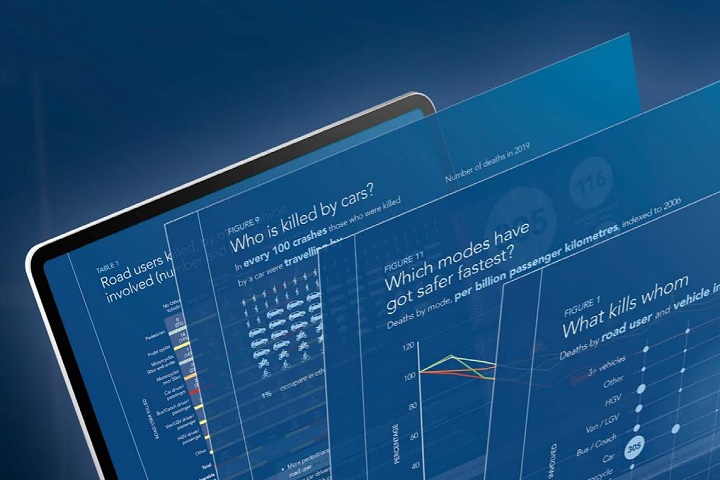
The Government is being urged to adopt a new style of casualty analysis which highlights the modes of road transport that most put others’ lives at risk, and those that rarely kill others.
The report, published by the Parliamentary Advisory Council for Transport Safety (PACTS), says DfT data ‘can tie even the most seasoned road safety professional in knots’ – and can be open to ‘misunderstanding’, which in turn can lead to ‘poor policy decisions’.
The report – titled ‘What kills most on the roads’ – uses simple graphics and charts to highlight the overall risks involved with different modes of transport, including the risks posed to others.
The analysis shows pedestrians and cyclists ‘rarely kill other road users’ while motor vehicles do, ‘in large numbers’. It also shows that road users are much more likely to be killed in a car, or by a car, than any other mode.
For every 100 pedestrians killed:
- 65 deaths involved a car
- 11 involved a lorry
- Seven involved a van
- Six involved a bus
Meanwhile, for every 100 cyclists killed:
- 48 deaths involved a car
- 12 involved a lorry
- Seven involved a van
- 14 involved no other vehicle
PACTS is calling for the DfT to include this form of analysis in future publications – particularly in light of current investment in healthy, sustainable and active modes of travel.
David Davies, PACTS executive director, said: “This new style of report shows road danger as well as vulnerability. It highlights the overall risks involved with different modes of transport, including the risks posed to others.
“We hope the DfT will include this form of analysis in its future publications, leading to a better understanding not only by experts but also by politicians and media of the sources of road danger and how forward-thinking policies on active travel can be achieved in parallel with ambitious road safety objectives.”
Barry Sheerman MP, chair of PACTS, said: “To bring about change we need good research, delivered with passion in language that connects with people, politicians and pundits.
“We must not be afraid to talk in plain terms about the dangers on the road and who is affected most.
“Today, we face multiple challenges the greatest of which is sustainability – for our communities, our economy and our planet environment.
“We must show that road safety and danger reduction are critical to these other agendas and can be integrated with them.”
There’s so much denial about the harm that high car use does – not only directly, with deaths through collisions, but indirectly, through toxic air, climate change and inactivity-related diseases.
Here in Brighton, people are trying to say these things are caused by cycle lanes.
Because the majority drive, there’s a collective delusion about the real harm of driving. We need to all wake up and take responsbility.
It’s a bit like the gun control ‘debate’ in the US, where people say that guns keep you safe.
Naomi Willets, Brighton
--6
“What kills most on the roads” Well would you believe it – moving, motorised vehicles apparently.
Hugh Jones, Cheshire
--7
Whist welcome, the problem lies with the quality of the data collected in the first place i.e. at the scene and making that available. It’s like a 100 mitigating factors distilled to 1, then making long term projections not unlike weather forecasting about causality and extrapolating this to policy. Rubbish in equals rubbish out not matter how you dress it.
Simon Hollows, Barnsley
+15